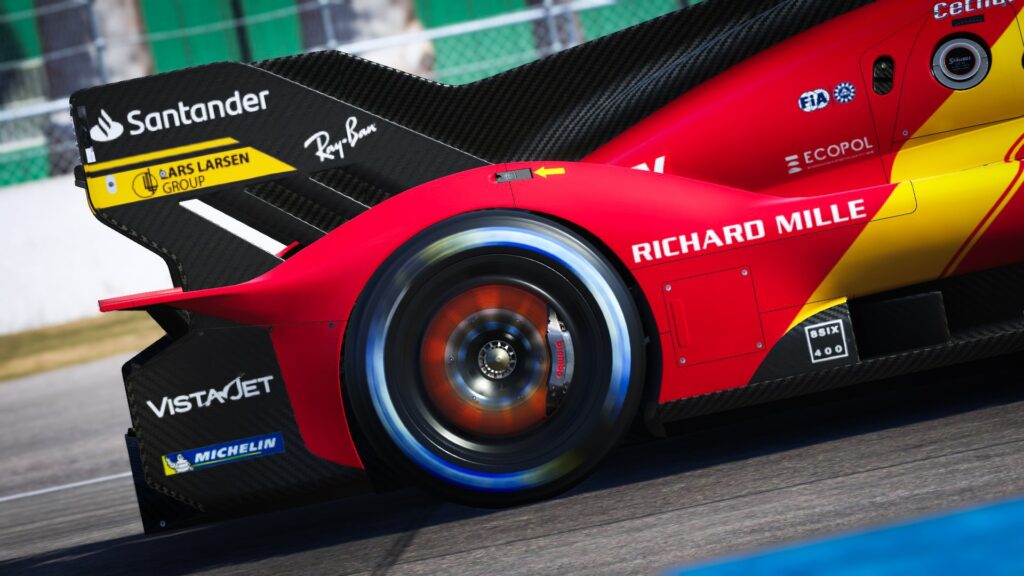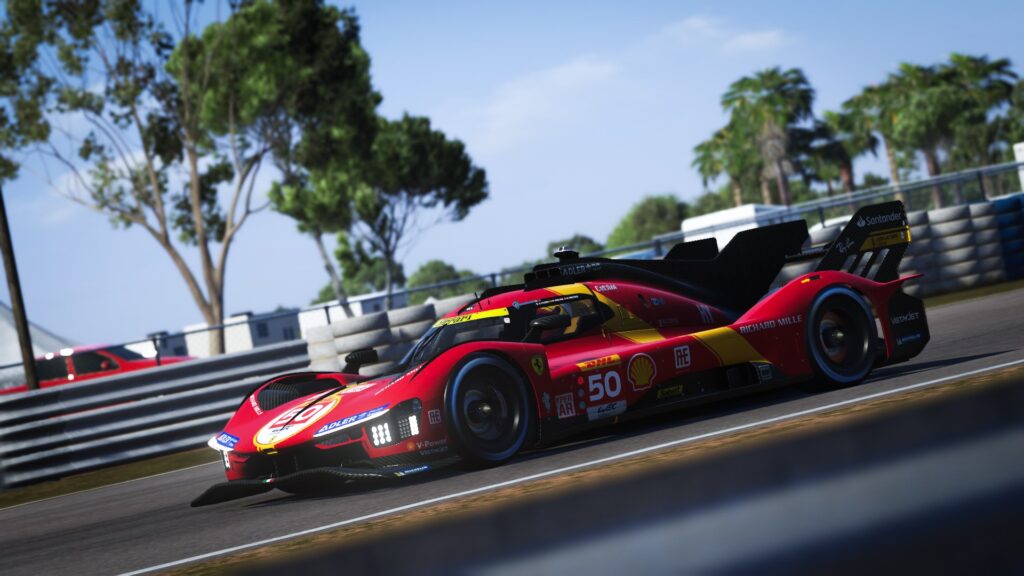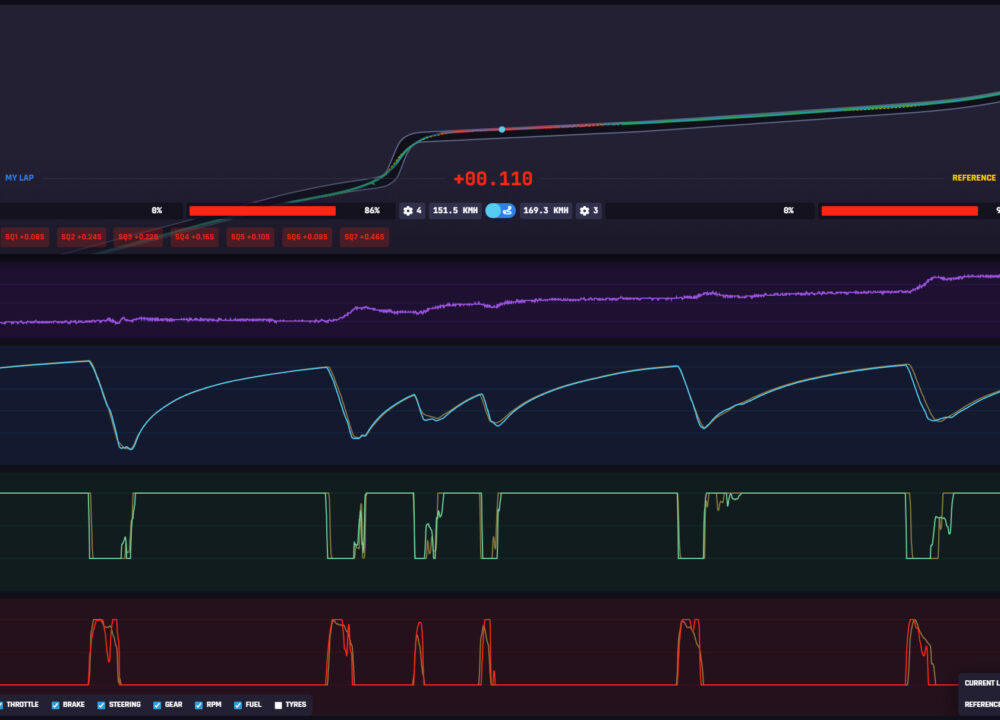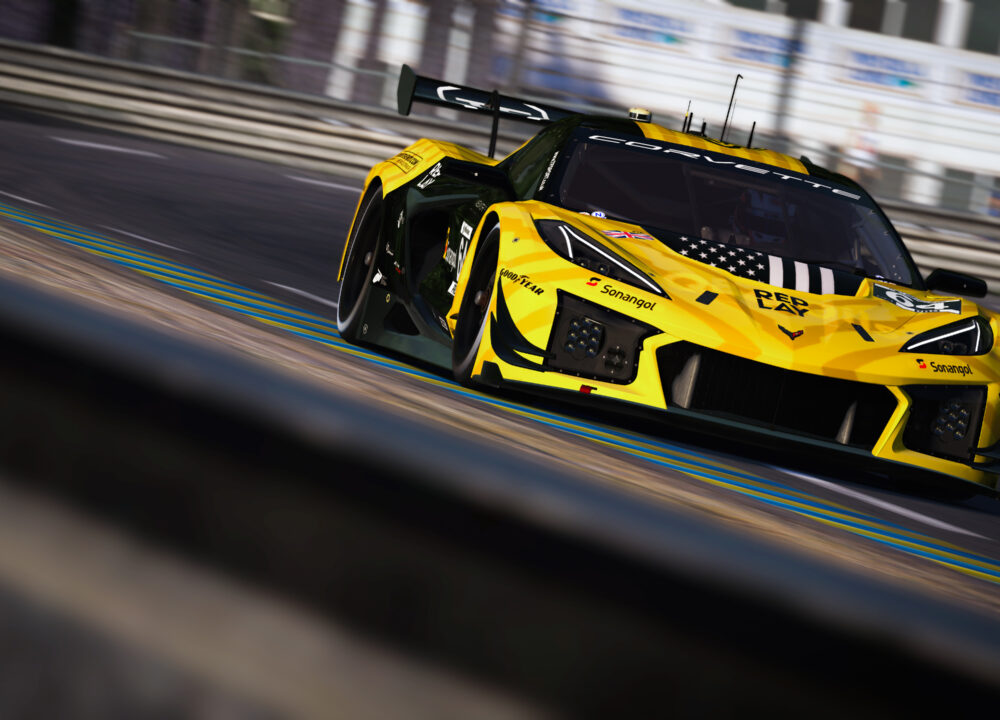The combined LMH and LMDh ruleset has taken the world by storm over the past couple of years, with the regulations helping to propel the popularity of the World Endurance Championship and IMSA SportsCar Championship exponentially.
Viewing numbers have increased hugely along with the renewed interest in endurance racing, with the exciting challenge luring in over ten manufacturers so far, with more on the way.
One of the most beloved is Ferrari’s LMH challenger, the 499P. Since making its debut at the start of 2023, the prototype has captured the hearts of Tifosi the world over. This translates to Le Mans Ultimate too, and this guide will run you through everything you need to know about it.
GET OUR FERRARI 499P SETUPS FOR LE MANS ULTIMATE HERE
The 499P Has Already Created History In Real Life
The 499P had many eyeballs fixated on it when it made its debut in the 2023 WEC season opener, the 1000 Miles of Sebring. It was the first Ferrari to take part in the top class of sports car endurance racing since the 312 PB, which enjoyed its last season of competition in 1973.
The 499P showed impressive speed from day one, with the No.50 machine claiming a podium on debut behind the dominant Toyota duo. The car would go on to claim a further five rostrum results in its maiden year, including a historic first win in the 24 Hours of Le Mans, en route to second in the constructor’s standings.
It managed to go back-to-back at Le Mans in 2024 before claiming third in the manufacturer’s championship, with the 499P also starting 2025 well by winning the season-opening Qatar 1812 km.
The 499P doesn’t only have its heritage to fall back on either as, due to being built to LMH regulations, it features a bespoke chassis and hybrid powertrain. This means it also features a bespoke exterior design, unlike LMDh vehicles which are based on LMP2 chassis, meaning they have a similar size and silhouette aside from the front and rear bodywork.
- The Ferrari 499P will fit the driving style of most drivers, as it features a nice balance that makes it easy to understand in not too many laps of experience. To get an idea of how it handles, take a look at this video of it circulating around Monza.
Car Specifications & Key Features
The 499P is built to LMH specifications and not LMDh, meaning Ferrari could develop a bespoke hybrid powertrain and carbon fibre chassis to utilise, rather than using LMP2-derived chassis and suspension or a spec-Bosch hybrid system.
One of the key differences is that while the spec LMDh hybrid battery has a capacity of 50 kW, the 499P’s is 200 kW. LMH cars are also allowed to have their hybrid units mounted to the front axle, meaning they are four-wheel-drive when hitting the deployment speed mandated to Balance of Performance, which is 190 km on the 499P.
LMDh cars have their systems mounted to the rear axle, ensuring they are full-time rear-wheel drive. For more info on the differences between the rulesets, refer to Coach Dave Academy’s in-depth guide covering them.
The 499P twins its hybrid powertrain with a twin-turbocharged 3.0-litre V6, which is mounted directly to the chassis to help strengthen the entire vehicle. A seven-speed sequential transmission helps transmit the 660 hp produced by the V6 to the driven wheels. The 499P features an advanced traction control system to help put the power to the road, though the braking is completely down to the driver due to the lack of ABS.
- The 499P features a fully adjustable aerodynamic platform that consists of a front splitter and rear wing, while a rear diffuser and flat floor help to create ground effect downforce to help keep the car stuck to the ground while reducing dirty air
- The 499P is modelled closely within LMU, from the design tweaks from year to year to a fully authentic version of its unique powertrain and chassis setup
- It’s important to utilise the 499P’s hybrid system correctly, as you need to ensure the onboard battery level is never sat fully depleted or fully charged
- If depleted, the battery won’t assist the engine and help it to save fuel, and if charged, the hybrid system isn’t harvesting energy from braking, which will reduce braking efficiency
- Leave your regen setting at the highest level to get the most braking assistance but play around with your motor settings to ensure that your battery level is constantly sitting between 0% and 100%

Handling & Performance on Track
In LMU, LMH vehicles tend to feature a more neutral cornering balance than LMDh cars, which can be more on a knife edge. The 499P largely follows this script, especially on corner entry and midway. The front turns in crisply, and the rear follows willingly, allowing you to attack corners confidently. This is the case in low and high-speed corners, though things get a bit trickier on exit.
The 499P tends to snap once trying to get on the power past the apex, ensuring you’ll need to be awake to ensure you keep it going in the direction you want. Once you get used to it though, this behaviour is easily controllable and fairly predictable. This can get trickier in the wet and when the tyres are worn, but you should be able to get used to it fairly quickly.
- The 499P is confidence-inspiring on corner entry and through to apex, though can get snappy on corner exit
- Fairly predictable, though you can overuse the rear tyres if you don’t work to smooth things out as the stint progresses
- The twin-turbo V6 is very smooth, and traction from slow corners is excellent, which makes it easy to drive consistently under acceleration
- Like every LMH/LMDh, braking can be tricky due to the hybrid system. The 499P tends to lock its rear wheels more willingly under braking, but it’s easier to recover from than most of the snappier LMDh options
Need Some Setups For Your 499P?
As the official setup partner for Le Mans Ultimate, you can be confident behind the wheel of our pro setups for the Ferrari 499P. With a qualifying, safe race and pro race setup available alongside telemetry data and hot laps.
Gain seconds in lap time with our incredible Le Mans Ultimate setups developed by professional sim racers and qualified engineers.
- Setups
- Data
- Lap Guides
Best Tracks for the Ferrari 499P in Le Mans Ultimate
The 499P’s confidence-inspiring handling makes it a strong choice at pretty much every track in LMU, with its general high-speed stability making it excellent at tracks such as Imola and Portimao, where you need to be confident the rear will stick when tipping the nose into the corner.
- The 499P possesses solid straight-line speed, so it’s not particularly strong but not weak in this area, making it a realistic option at tracks with longer straights
These elements are reflected by the 499P’s real-life form guide, where it has proven competitive at every circuit on the WEC calendar, and shows race win-challenging pace more often than not.

How It Compares to Other Cars in the Class
The 499P slots in pretty much in the middle of its closest LMH rivals in LMU, the Toyota GR010 and the 2024 Peugeot 9×8. While the Toyota offers more stability in all phases of the bend and is easier to drive for less experienced pilots, the difference isn’t huge and it has particularly weak top-end speed. The Peugeot, meanwhile, has an excellent top end, though suffers from understeer, making it less effective in high-speed corners than the Ferrari.
- It provides a happy medium compared to its LMH rivals, though some LMDh competitors like the BMW M Hybrid V8 offer more stability and are better suited to newcomers
- It’s more predictable under braking than its LMDh rivals, which tends to snap aggressively if you make an error, while the 499p is easy to recover if things go wrong
- The 499P sits mid-way in terms of straight-line speed compared to its Hypercar rivals, making it a solid performer but not exceptional
- The 499P’s all-wheel-drive capability makes it useful compared to LMDh cars in very wet conditions, such as when cars struggle to maintain grip at speeds above 190 kph when the hybrid system kicks in
Final Verdict: Is the Ferrari 499P the Right Choice for You?
The 499P is a strong choice for a variety of drivers in LMU, providing a generally balanced driving experience aside from a bit of corner-exit snappiness, which is generally controllable once you get used to it. It’s confidence-inspiring when approaching corner entry and apex and doesn’t bite too hard if mistakes under braking are made.
| Pros | Cons |
| A smooth torque curve means traction is solid | The rear end is snappy on the corner exit, can affect traction and momentum if not dealt with swiftly |
| Stable under braking, and less prone to sudden locking and loss of control of other hypercar challengers | |
| Strong stability in wet weather compared to LMDhs above 190 kph |
The 499P is best suited to drivers who have some prior experience of driving hypercars in LMU, with newcomers likely best suited to more docile machines like the Toyota GR010 and BMW M Hybrid V8. The Ferrari isn’t particularly difficult to get a handle, on though, and shouldn’t take too long to get comfortable with should you commit to learning it from the start.
- Aggressive Drivers: 9/10
- Endurance Racers: 8/10
- Casual Sim Racers: 6.5/10
Wrapping Up
The Ferrari is one of the most popular choices in LMU for a reason: it looks awesome, provides a fun but confidence-inspiring driving balance, and sports one of the most revered badges in the history of motor racing.
If you want to further refine your skills behind the wheel of the Ferrari 499P, be sure to get Delta AI, which will give you Auto Insights into where you can improve instantly.
AI Coaching that actually works
Don't get lost in the data, instantly unlock lap time using our new real-time Auto Insights coaching. Elevate your braking, apex, and exit performance in record time.






